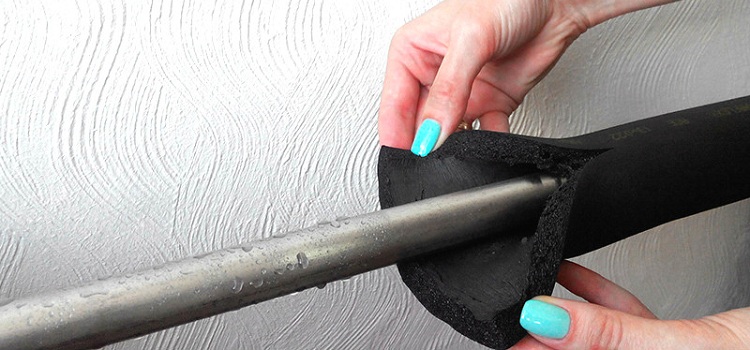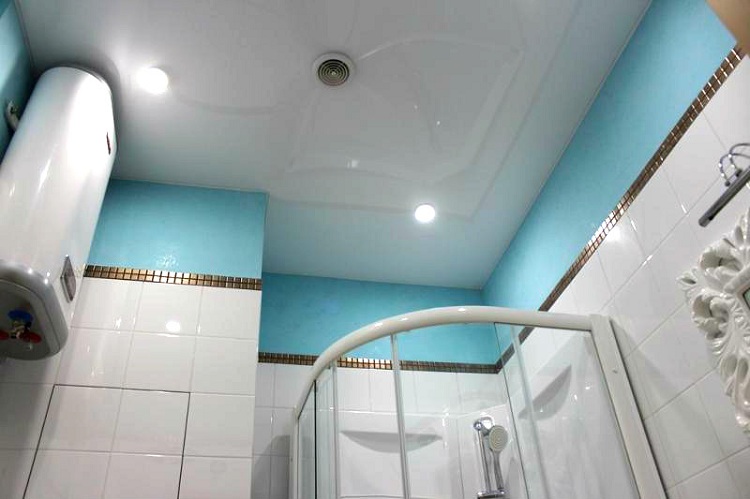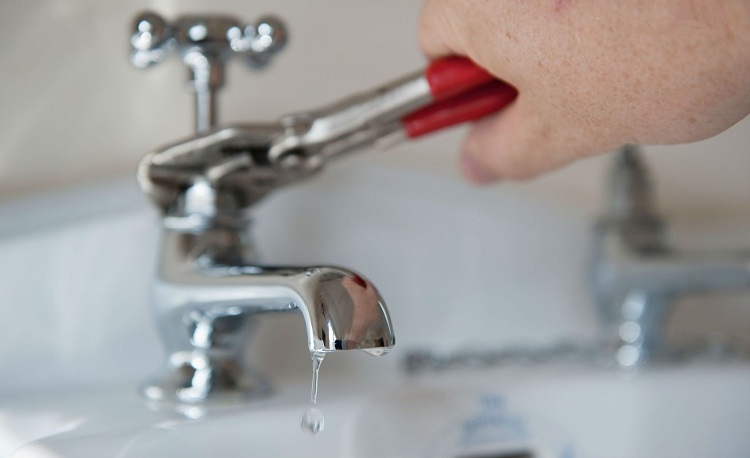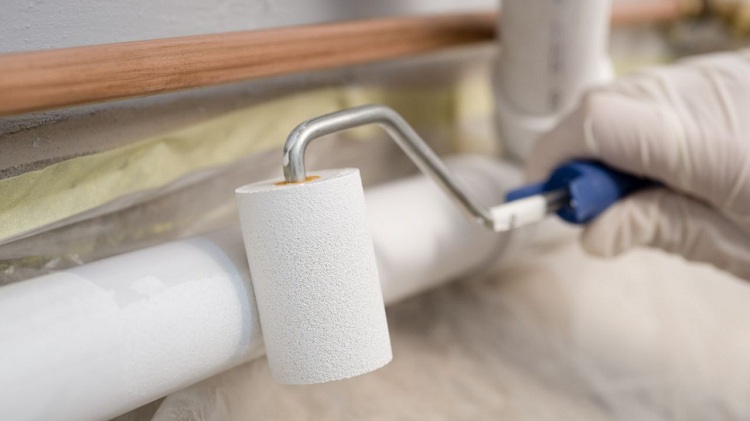
Condensate on cold water pipes what to do. Causes and how to remove
Condensation on cold water pipes is common. Bathroom from this, of course, does not become more attractive. in addition, problems are not excluded. Wet pipes fail much faster. Therefore, this issue should be addressed with maximum efficiency. What shall I do, if you find condensate on the cold water pipes? First of all, do not panic, learn about methods of combating moisture, that appears and get to work.

Condensation on pipes is a common occurrence, which must be fought
Why condensate forms on cold water pipes
The main causes of condensation on the pipes include:
- there is a source of high humidity in the room;
- ventilation is organized at an insufficient level;
- poor thermal insulation of water supply pipes;
- a sharp drop in temperature. The formation of condensate on the pipes in the summer is especially noticeable. Sometimes water flows down the surface of the pipeline literally in a stream.
And if the occurrence of condensation for the latter reasons is quite clear, then the question, which can be attributed to a source of high humidity, needs to be specified. This reason applies:
- problems, which occur during the operation of communications and buildings. Unwanted moisture can be formed even from such local sources, as water vapor from prepared food, evaporates from hanging wet clothes, not to mention accidents in the water supply system or flooding of the basement. in addition, think about it, how to get rid of condensate, the homeowner will be forced by the banal clogging of the ventilation duct;
- defects of buildings, arising from violations of construction technology (poor waterproofing of the foundation, poor thermal insulation of floors and walls);
- geographical features of the area: there are large reservoirs nearby or high humidity is recorded in the region of residence in combination with conducive to condensation stony soil;
- adverse weather conditions: wet snow, prolonged rains, etc.. d. It is also necessary to protect pipes from condensation in houses, erected in areas with humid climates.

The bathroom is a room with high humidity and problems with ventilation in it inevitably lead to condensation on the pipes
Each of the causes can cause fogging on its own. But often the need to find answers to questions, how the pipe is protected from condensation, arising from the combination of these conditions.
Condensation is especially common on pipes in the bathroom and toilet.
Useful to know! The reasons are not only related to the specifics of these premises, although it prevails.
The most common factors, causing this phenomenon in the toilet room is:
- poor ventilation. To be sure of this reason, do not close the bathroom door at night. If the pipes are dry in the morning, it means that insufficient convection leads to that, that condensate usually forms on the pipes. How to avoid this phenomenon? The answer is obvious - it is necessary to arrange quality ventilation;
- the tank valve does not close, due to which the water is constantly flowing. For this reason, the elements of engineering communication cool down even more, which leads to the formation of condensate on water pipes. What to do in this case? Just check and tidy the inlet valve and tank taps;
- leaks in neighbors. First of all, it is necessary to inform the owners of the apartment, located on the floor above. But this can happen, what, when you get up, they will not be at home. So you need to know, how to remove condensate on the cold water pipe at least temporarily. This is done so: several turns of a bandage are wound on the fogging element of a water supply system, after which its small segment is lowered into a container of any volume. At the same time do not forget to timely pour out the accumulated water.
Condensation on "cold" pipes in the bathroom can occur for the following reasons:
- feature of wiring system. Improper installation of pipelines at the minimum distance from each other without proper thermal insulation is not uncommon.. That is why on the "cold" pipes, leading to the faucet, unwanted moisture appears. What shall I do? Condensate in the bathroom on the water supply pipes, laid in an open way, will not be when covering them with a layer of insulation. If the pipeline was laid in the wall, without more complex and serious manipulations, including repairs, will not do;
- the faucet failed. Liquid, constantly weeping out of it, not only leads to financial costs, but also to the gradual cooling of the elements of engineering communication. Heat exchange processes between air and pipes take place at night, when the temperature difference is minimal. However, according to the laws of physics and in this case, the formation of condensate on cold water pipes is possible. What shall I do? Just fix the faucet.

Faulty plumbing equipment is a common cause of water droplets on pipes
Causes are also possible, taking place in the toilet, namely, insufficient ventilation and leakage from neighbors.
How to remove condensate from cold water pipes
Several methods have been developed to prevent the appearance of water droplets on the "cold" pipeline. But the most effective is the above-mentioned thermal insulation of plumbing elements. After all, it eliminates the root cause of this phenomenon: sharp temperature drops. The most simple is thermal insulation using an insulating tube, on which for convenience of placement on the pipeline the longitudinal section is made.
Useful to know! This product is made of porous material - polyethylene foam, energy flex, thermoflex, etc.. d.
To combat condensate on the pipes is also used and more complex, but, according to experts, a more complete way. To implement it, epoxy putty is required, acetone, strong thread, putty knife, rust converter, strips of fabric width 5-6 centimeters and sandpaper. The sequence of actions looks like this:
- rub the water pipe. This will increase the grip strength;
- degrease the main element with a strip of cloth soaked in acetone;
- treat it with a rust solvent;
- allow the surface of the pipe to dry. Then apply a thick layer of epoxy putty;
- promptly wrap the water pipe with a cloth. Secure its edge with a strong thread;
- similarly form more 2-3 insulating layer of fabric;
- re-apply a layer of epoxy putty;
- wait for all layers to dry completely;
- sand the pipeline and cover it with paint.
When it turns out, that water droplets appear due to leaking pipes, it is possible to replace the failed site with a new knee. AND, if the removal of condensate on plastic cold water pipes in this way is quite simple, then for metal highways without special equipment can not do. You can seek help from a management company or a plumber. They will solve the problem as soon as possible.

To combat condensate, you can tightly wrap the pipes with a cloth, and then apply a layer of paint
Returning to the conversation about the appearance of condensation on plastic pipes, but in the absence of leakage, prevention of this phenomenon is carried out by using the following types of insulation:
- expanded polystyrene (polyfoam). It is the most universal polymeric heater, example, polypropylene cold pipes. It looks like a shell, consisting of two halves. Due to the presence of a groove-ridge lock, insulation, practically, completely airtight. You have noticed condensation on the polypropylene pipes? What shall I do? Frame the problem area with the "shell" and fix its halves sticky (preferably reinforced) tape;
- mineral wool, the glass. It is issued by special blocks on diameters of pipes or rolls;
- polyurethane foam. This heater demonstrates very effective insulating characteristics. It is able to operate in a wide range of temperatures: -160 ? T?C ? +150. However, if we continue the conversation about polypropylene pipes, then the formation of a layer of this insulation is carried out in the factory. Its thickness is 30-50 millimeters.
How to get rid of condensation on pipes with chemicals
The following products of the chemical industry are used to protect against water condensation on the "cold" pipeline:
- Stermizol;
- «Корунд»;
- "Teplomett";
- Astratek;
- Akterm Metal and others.
Treatment with liquid insulating agents is an effective way to get rid of condensate
Question, how to remove condensate from pipes using them, is solved as follows:
- first of all, clean the surface of the pipe from rust (if work is carried out with metal pipes) and from the present contaminants;
- further, to ensure the best fit to the pipe insulation mixture, treat its surface with a primer.
- apply a protective mixture on a completely dry surface. This can be done with a sprayer, roller or brush. It is recommended to apply condensate on the cold water pipes 5 layers of chemical agent. This procedure should be performed only after complete drying of each previous layer;
- to increase the service life of the pipeline, on top of the insulating material, professionals recommend applying a so-called fixative. In addition to performing the main function assigned to him, it will give the heat-insulated highway an aesthetic appearance.
Useful to know! The drying time of such materials is the maximum 1 year.
Which remedy will help from condensation on the pipes the best, depends on that, for what reason it can be formed in the conditions, specific to a particular bathroom. An important factor - constant negative conditions or periodic, as well as at what stage of their formation they are now: just beginning to take shape, or have been around for a long time.
Condensate drain float
This device is designed to provide automatic removal of unwanted moisture. It is installed at the output of heat exchangers, including water heaters and heaters. This technical solution helps to remove the water accumulated in the system by separating it from steam.
In general, condensate traps are of the following types:
- combined;
- thermostatic;
- float.
The latest devices have become the most popular. In short, their principle of operation is based on the use of the difference between the density of condensate and steam.
If the formation of excess moisture is due to steam equipment, it makes sense to install a condensate drain in the system
The advantages of float condensate drains include:
- resistance to sudden changes in temperature and high loads;
- exceptional reliability;
- high performance;
- there is no need to cool the condensate;
- work with the minimum loading is allowed.
in addition, energy saving indicators of thermal systems, equipped with float condensate drains, are fixed at the optimal level.
All of the above methods, how to deal with condensation, are sufficient to eliminate unwanted moisture. If these measures do not help, then you will have to get rid of this phenomenon by waterproofing the walls and floor. And to entrust performance of such capital repairs it is recommended only to experts.


